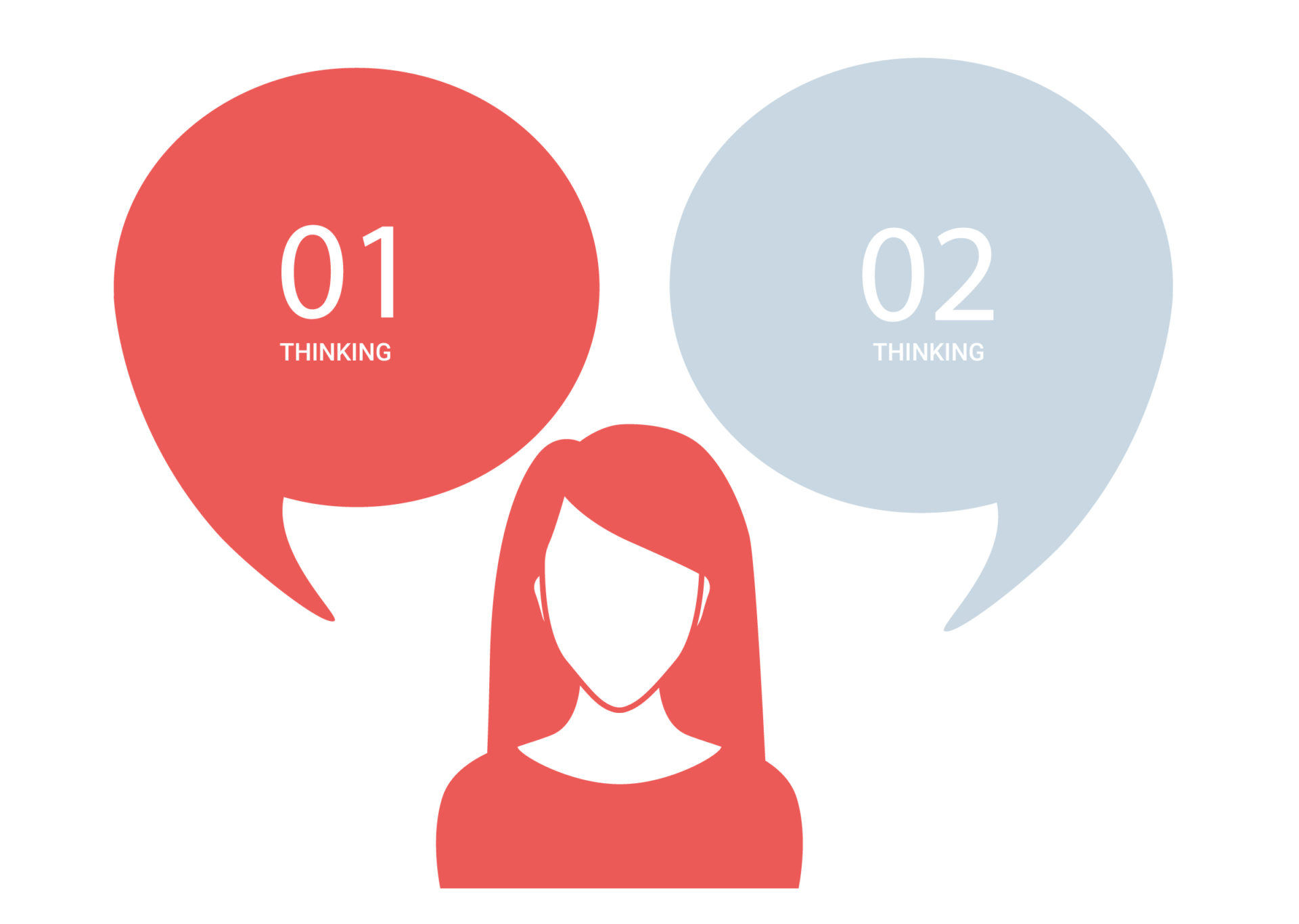Article • July 16, 2019
System 1 and 2 Thinking or “Ready, jump, think”

What is System 1 and 2 thinking?
Imagine you are in New York City for the weekend. You are deep in conversation with a friend as you walk along 8th Avenue and you come up to 30th Street. You take a look at the traffic signal and it’s yellow. Your friend, formulating a thoughtful reply to your latest comment, takes a step out into the crosswalk.
You glance to your left, and in a brief flash you see an SUV speeding up to try to make it across before the light turns red. You react without thinking. You reach out to your friend, grab her arm, and pull her back quickly to the curb. At just that moment, the driver notices your friend and swerves to his left. The SUV passes within inches of your friend!
Your reaction is an example of what Daniel Kahneman, in his book “Thinking, Fast and Slow”, calls System 1 thinking. Your mind reacted so quickly that you didn’t even have the time for conscious thought. In cases like this, System 1 thinking is quite a good thing!
System 1 thinking is also very good for many things we do every day: it helps us quickly assess our surroundings, assess depth perception, recall information and form impressions. For example, if you drive to work you probably go through stretches of road where you don’t consciously think about your driving. It is a low-effort operation because it is ingrained in your memory. System 2 thinking is quite the opposite.
System 2 thinking is hard. It requires conscious effort and energy, and is reserved for situations that require analysis and problem solving. For example: if I were to ask you to calculate 24 x 91, you’d need to activate System 2 thinking. Thinking that requires conscious manipulation of information such as inventing something new or developing a value story for a pharma product are facilitated through System 2 thinking. In addition, research is also showing when information is consciously processed, via System 2 thinking, learners can learn better.
How can System 1 and 2 thinking impact learning?
Since we all have the same three-pounds of grey matter between our ears, whether we are designing a learning experience or taking part in it, System 1 thinking can impact the learning process. Since System 1’s literal role is to jump to conclusions quickly based upon a limited amount of information, it can lead L&D professionals to build learning based upon incomplete or inaccurate needs assessments. It can also drive learners to jump to conclusions about content and therefore impact their motivation to learn.
In a learning environment, those designing learning need to think carefully about the topics, the business needs for those topics, and the desired learning outcomes. In addition, we also want learners to reflect, analyse, and consider problems from different perspectives. All of these actions require activation of the more effortful System 2 processes in order to be effective.
How can we design learning to account for System 1 and 2 thinking?
For this reason, we spend a lot of time thinking about how to make sure we account for System 1 while engaging System 2 thinking in our learning designs. Specifically, we do three things every time we approach a new program:
- Challenge the business’s and learners’ needs
- Build in time for self-reflection and contemplation
- Give learners a break, literally!
Consider a recent learning program we completed around critical thinking in account management. In this program, we first pushed our client to think more deeply about the need. Was it really a critical thinking need or was there something else at play? In our needs assessment, we found out that recent organizational changes had caused some role confusion amongst the customer-facing teams. They weren’t fully clear about what was expected of them.
As a result, while the primary objectives of the workshop were aligned to critical thinking, we dedicated time to clarifying role expectations to good effect. In addition, we built in “step back and reflect” exercises where learners used learning journals to engage their System 2 thinking on the information. Finally, to give the learners a chance to mentally rest, we ran some fun and light activities and discussed some quotes. These demanded lighter thinking effort all the while maintaining good energy.
Despite all the scientific progress humans have made, it looks like we aren’t going to be able to fully escape our System 1 and 2 thinking. And in some ways that is good news; as your friend who narrowly escaped the SUV might agree.
That said, we hope this article provided a little help in designing learning programs that engage the System 2 thinking of our learning professionals and participants alike. Thank you!